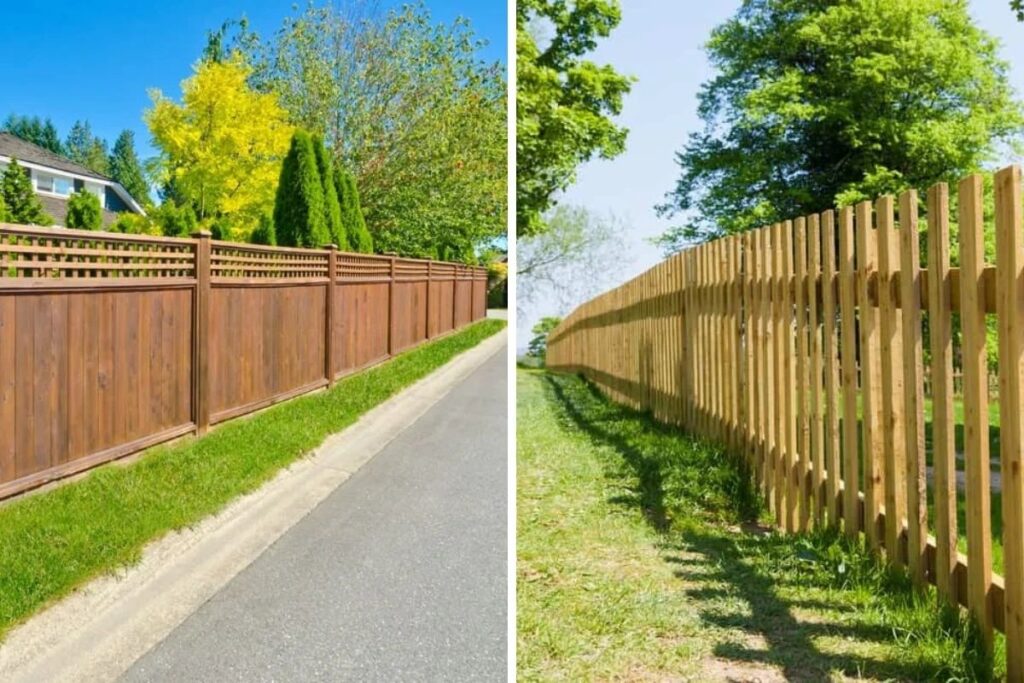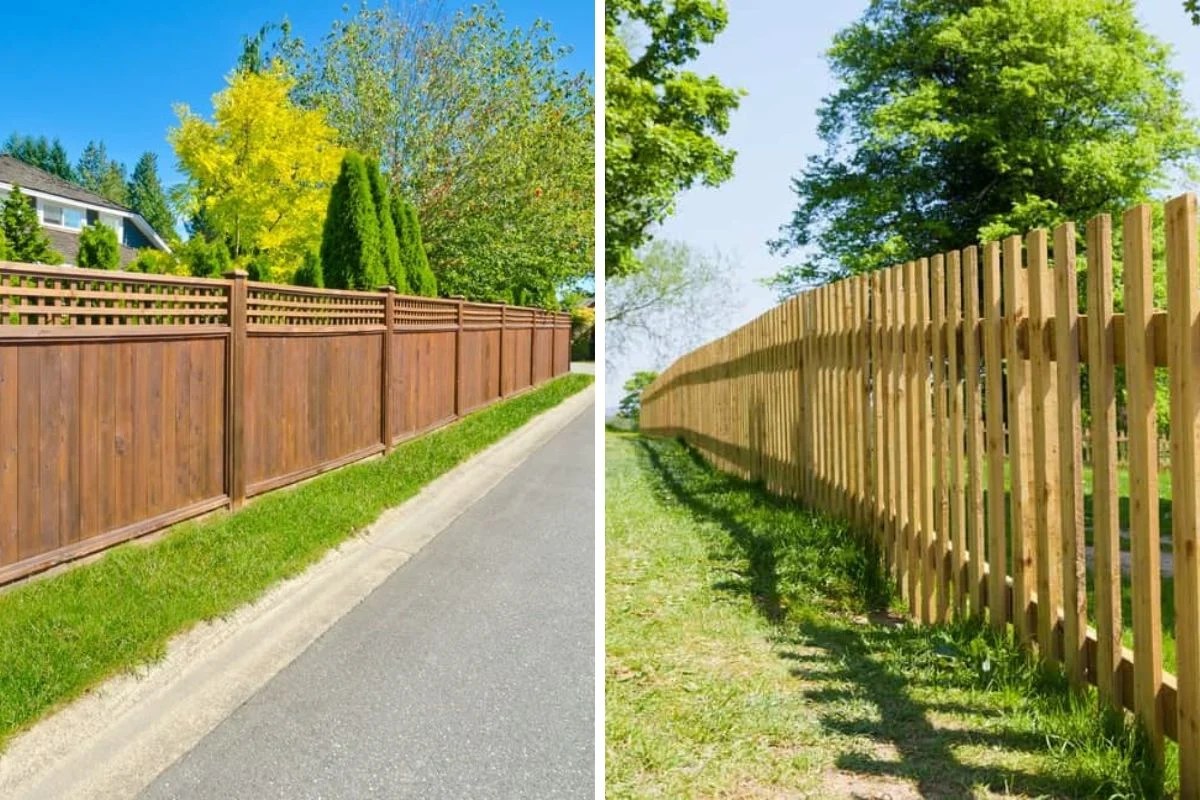
Exploring the Diverse World of Different Wooden Fence Styles
A wooden fence is more than just a boundary marker; it’s a statement of style, a security feature, and an enhancement to your property’s curb appeal. With a myriad of different wooden fence styles available, selecting the right one can feel overwhelming. This comprehensive guide delves into the various options, helping you choose the perfect fence to complement your home and meet your specific needs. From classic picket fences to modern horizontal designs, we’ll cover the aesthetics, functionality, and practical considerations of each style.
Understanding the Basics of Wooden Fences
Before diving into the specific styles, it’s essential to understand the fundamental components of a wooden fence. These include posts, which provide the structural support; rails, which connect the posts horizontally; and pickets or panels, which form the visible barrier. The type of wood used, the spacing between pickets, and the overall height all contribute to the fence’s appearance and performance.
Types of Wood
The choice of wood significantly impacts the longevity and maintenance requirements of your fence. Common options include:
- Pressure-Treated Pine: An affordable and readily available option, pressure-treated pine is resistant to rot and insects. However, it may require staining or painting to maintain its appearance.
- Cedar: Naturally resistant to decay and insects, cedar is a popular choice for its warm color and aromatic scent. It requires less maintenance than pine but is generally more expensive.
- Redwood: Known for its rich color and natural durability, redwood is a premium option that resists warping and cracking. It’s a sustainable choice, but also one of the pricier options.
- Cypress: Similar to cedar in its resistance to decay and insects, cypress is a good alternative that is often more readily available in certain regions.
Classic Wooden Fence Styles
Picket Fence
The quintessential American fence, the picket fence evokes a sense of charm and nostalgia. Typically featuring evenly spaced vertical boards with pointed or rounded tops, picket fences are ideal for defining property lines and creating a welcoming atmosphere. Picket fences are one of the most recognizable different wooden fence styles. They are often painted white, but can be customized with various colors and decorative elements.
Post and Rail Fence
Also known as a ranch fence or split-rail fence, this style consists of horizontal rails connected to vertical posts. It’s a rustic and economical option, perfect for large properties or farms. While primarily functional, post and rail fences can also add a touch of country charm to your landscape. This style is less about privacy and more about marking boundaries.
Privacy Fence
Designed to provide seclusion and block unwanted views, privacy fences are typically tall and solid, with closely spaced pickets or panels. They offer a high degree of privacy and can also help reduce noise. Common variations include board-on-board fences, which feature overlapping pickets for complete coverage, and shadowbox fences, which offer a more decorative look while still providing substantial privacy. Choosing between different wooden fence styles for privacy depends on your personal preference and desired aesthetic.
Modern Wooden Fence Styles
Horizontal Fence
A sleek and contemporary option, horizontal fences feature boards running horizontally between posts. This style creates a clean, linear look that complements modern architecture. Horizontal fences can be constructed with various materials, including wood, composite, or metal. The horizontal orientation creates a visually wider appearance, which can enhance the perceived size of your property. They are becoming increasingly popular among the different wooden fence styles.
Louvered Fence
Similar to horizontal fences, louvered fences feature angled slats that allow for airflow and partial visibility. This style offers a balance between privacy and openness, creating a unique and stylish look. Louvered fences can be adjusted to control the amount of light and privacy, making them a versatile option for various applications.
Board-on-Board Fence (Vertical or Horizontal)
While traditionally a privacy fence, the board-on-board construction can be adapted for a more modern look. Overlapping boards create a textured surface with varying shadows, adding depth and visual interest. This style can be oriented vertically or horizontally, depending on your design preferences.
Decorative Wooden Fence Styles
Scalloped Fence
A scalloped fence features pickets that are cut to create a curved or undulating top edge. This adds a touch of elegance and visual interest to a traditional picket fence. Scalloped fences are often used to enhance gardens or create a charming border around a property. The scalloped design softens the lines of the fence, making it more visually appealing.
Dog-Ear Fence
A simple yet versatile style, the dog-ear fence features pickets with rounded or beveled corners. This softens the edges of the fence and prevents splintering. Dog-ear fences are a popular choice for their affordability and ease of installation. They are a common and practical choice among the different wooden fence styles.
Lattice-Top Fence
Adding a lattice panel to the top of a fence creates a decorative and airy look. Lattice can be used to support climbing plants or simply add visual interest. This style is often used to enhance privacy fences or create a more inviting entrance. Considering the different wooden fence styles, lattice-top provides an elegant touch.
Factors to Consider When Choosing a Wooden Fence Style
Selecting the right wooden fence involves more than just aesthetics. Consider the following factors:
- Purpose: What do you want the fence to accomplish? Privacy, security, aesthetics, or boundary definition?
- Budget: Wooden fences range in price depending on the type of wood, style, and installation costs.
- Maintenance: Some woods require more maintenance than others. Consider your willingness to stain, paint, or seal the fence regularly.
- Local Regulations: Check with your local homeowners association or municipality for any restrictions on fence height, style, or materials.
- Property Style: Choose a fence style that complements the architecture of your home and the overall landscape.
- DIY vs. Professional Installation: While some fence styles are relatively easy to install yourself, others may require professional expertise.
Maintaining Your Wooden Fence
Proper maintenance is crucial for extending the life of your wooden fence. Regular cleaning, staining, or painting can help prevent rot, decay, and insect damage. Inspect your fence regularly for any signs of damage, such as loose posts, cracked pickets, or insect infestations. Addressing these issues promptly can prevent them from escalating into more costly repairs. Power washing your fence every few years can remove dirt and mildew, restoring its appearance. Applying a sealant or water repellent can further protect the wood from the elements. The longevity of different wooden fence styles depends on proper maintenance.
Conclusion
Choosing the right wooden fence style is a significant decision that can impact your property’s appearance, security, and value. By understanding the various options available and considering your specific needs and preferences, you can select a fence that perfectly complements your home and enhances your outdoor living space. From the classic charm of a picket fence to the modern lines of a horizontal design, there’s a wooden fence style to suit every taste and budget. Remember to factor in the purpose of the fence, the type of wood, the maintenance requirements, and any local regulations. With careful planning and proper installation, your wooden fence will provide years of enjoyment and add lasting value to your property. Exploring different wooden fence styles allows for personal expression and property enhancement. Ultimately, the best choice depends on your individual needs and aesthetic preferences. Considering the different wooden fence styles available ensures you find the perfect fit. Proper maintenance is key to the longevity of all different wooden fence styles.
[See also: How to Choose the Right Fence Material]
[See also: Fence Installation Guide]
[See also: Maintaining Your Wooden Fence]

